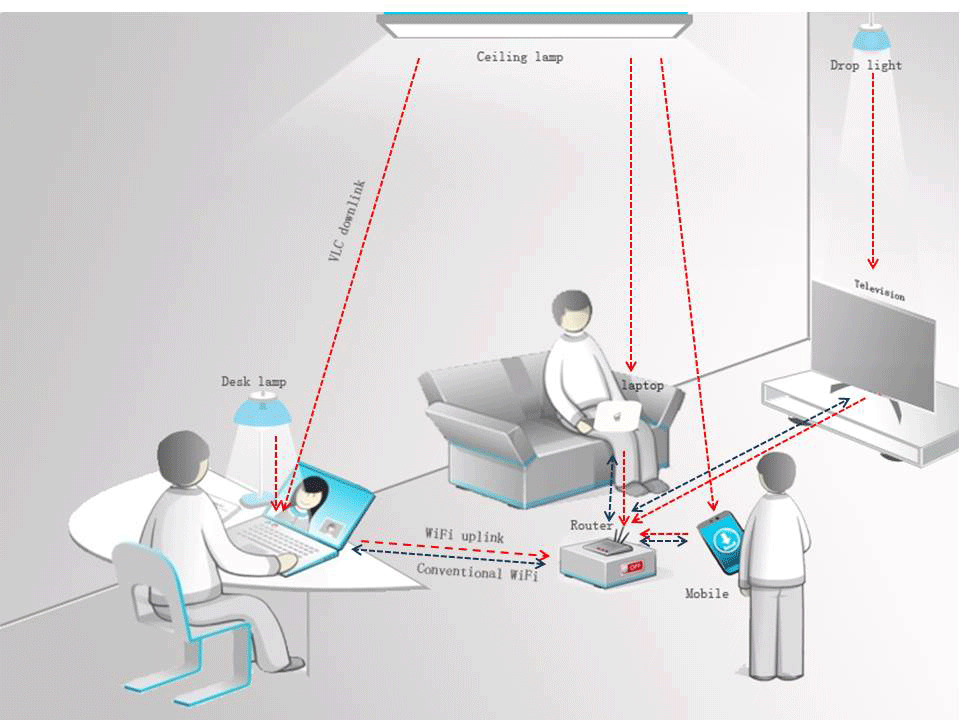Visible light communications (VLC) is emerging as a new alternative to the use of the existing and increasingly crowded radio frequency (RF) spectrum. VLC is unlicensed, has wide bandwidth, supports new levels of security due to the opacity of walls, and can be combined to provide both lighting and data communications for little net increase in energy cost.
As part of a lighting system, VLC is ideal as a downlink technology in which data are delivered from overhead luminaries to receivers in the lighting field. However, realizing a symmetric optical channel is problematic because most receivers, such as mobile devices, are ill-suited for an optical uplink due to glare, device orientation, energy constraints.

